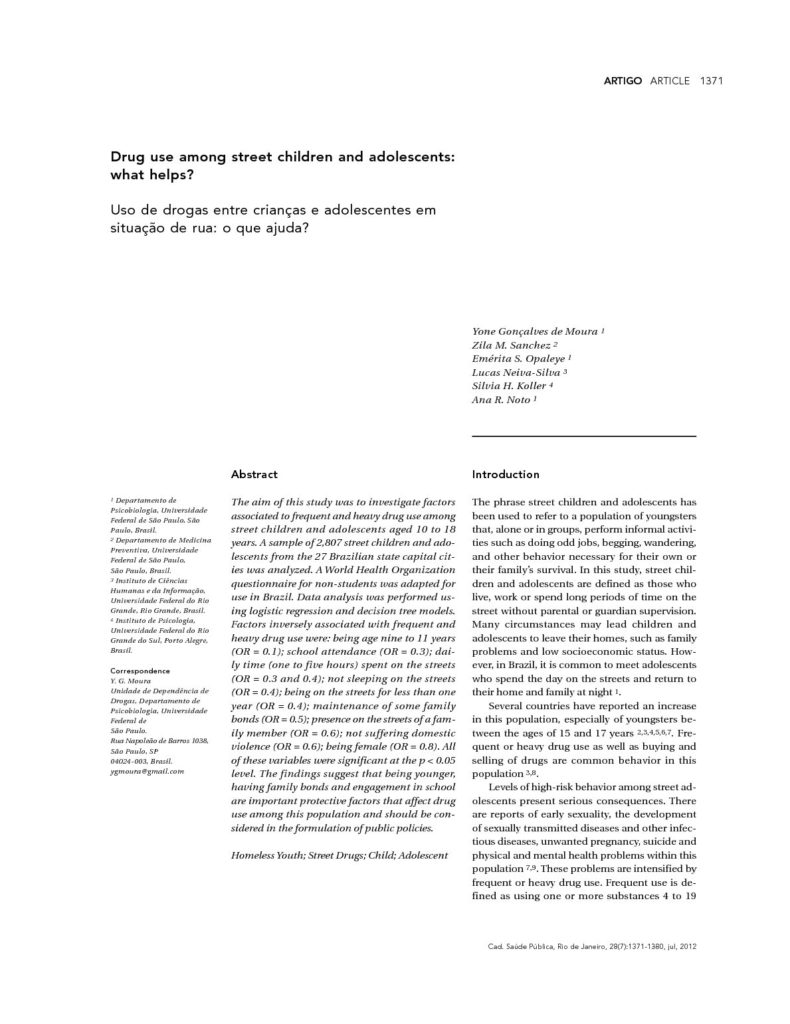
Drug use among street children and adolescents: What helps?
Summary
This article is published in Cadernos de Saúde Pública and is distributed under a Creative Commons Attribution License.
The aim of this study was to investigate factors associated to frequent and heavy drug use among street children and adolescents aged 10 to 18 years. A sample of 2,807 street children and adolescents from the 27 Brazilian state capital cities was analyzed.
A World Health Organization questionnaire for non-students was adapted for use in Brazil. Data analysis was performed using logistic regression and decision tree models. Factors inversely associated with frequent and heavy drug use were: being age nine to 11 years (OR = 0.1); school attendance (OR = 0.3); daily time (one to five hours) spent on the streets (OR = 0.3 and 0.4); not sleeping on the streets (OR = 0.4); being on the streets for less than one year (OR = 0.4); maintenance of some family bonds (OR = 0.5); presence on the streets of a family member (OR = 0.6); not suffering domestic violence (OR = 0.6); being female (OR = 0.8). All of these variables were significant at the p < 0.05 level. The findings suggest that being younger, having family bonds and engagement in school are important protective factors that affect drug use among this population and should be considered in the formulation of public policies.
Discussion
Users can discuss this report and make suggestions for future updates. You must be signed in to submit a comment.
No comments
Join the conversation and
Become a Member Existing member loginbecome a member.